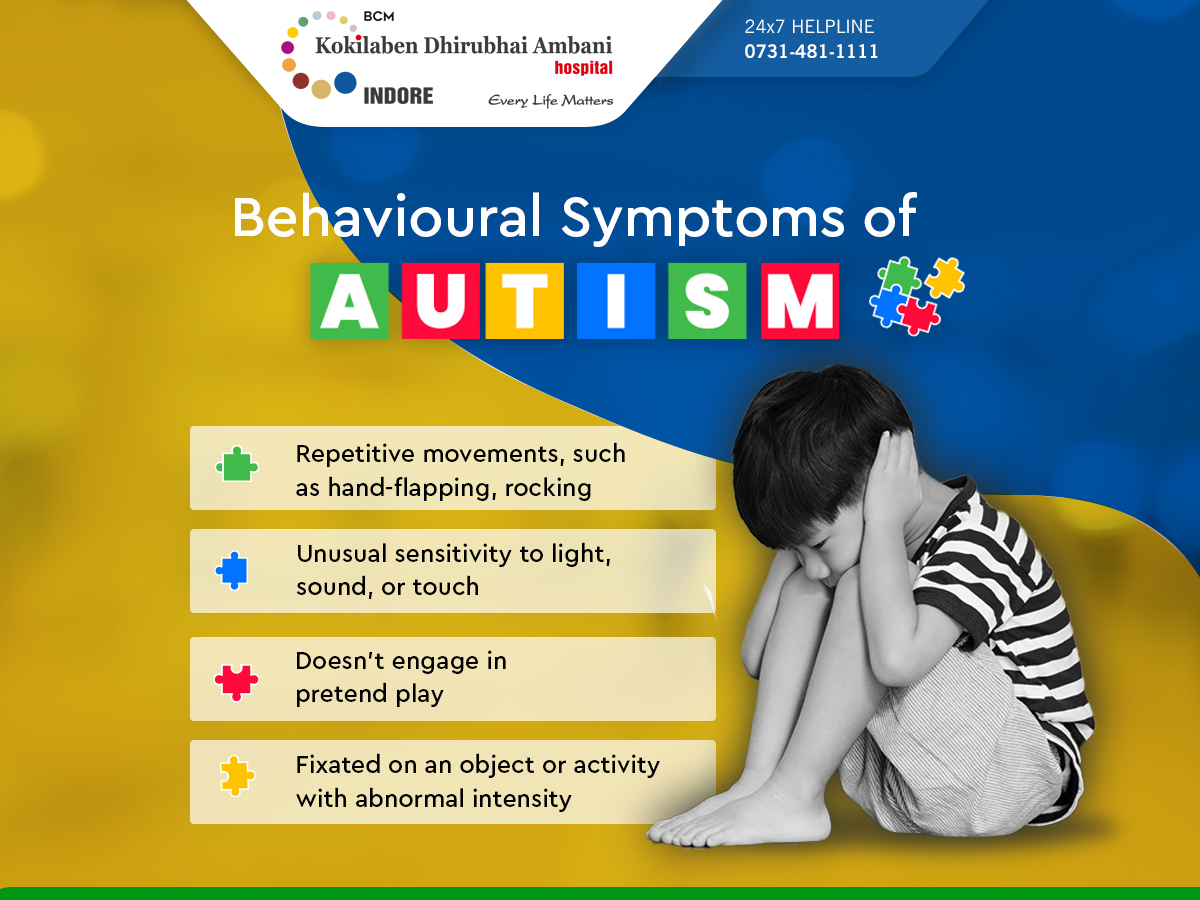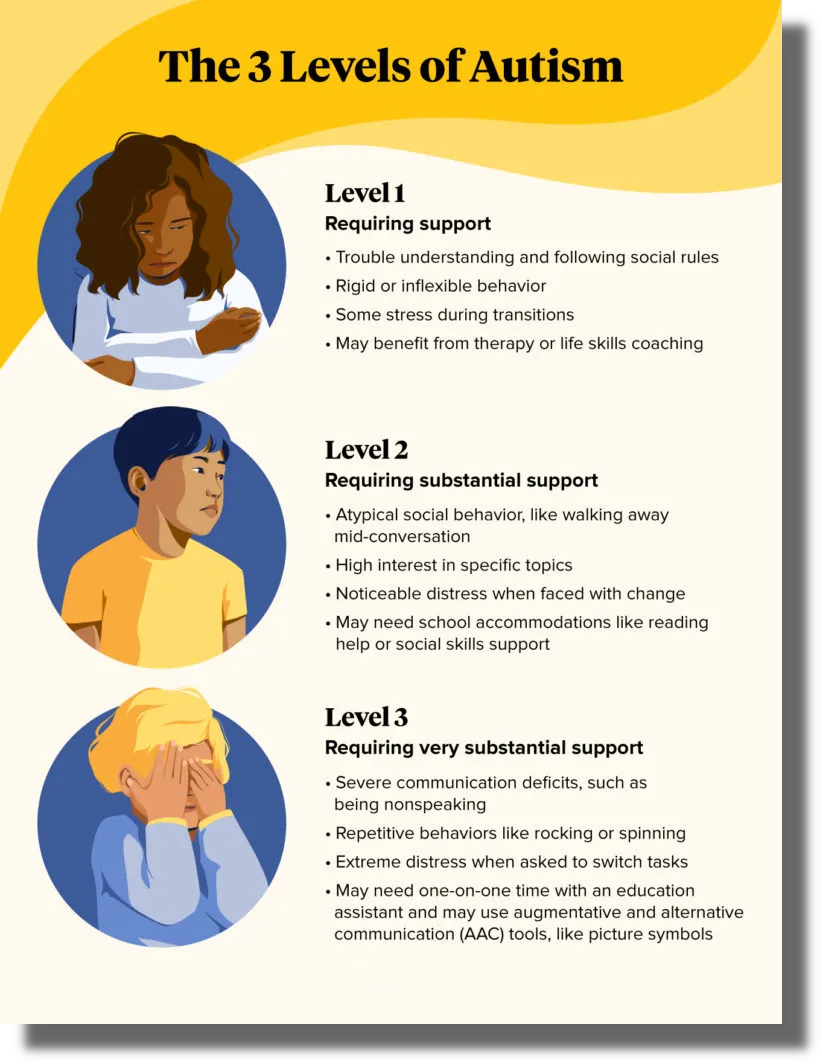Understanding the Influence of Behavioral Autism on Life and Social Communications
You could not recognize how deeply behavior autism affects every day life and social communications. People on the range often navigate a globe filled up with communication hurdles and sensory overload. These difficulties can bring about irritation and isolation, influencing their relationships and total health. Recognizing these subtleties is essential for fostering supportive settings. What techniques can we execute to develop more meaningful links and inclusive areas? The solutions might shock you.
Defining Behavioral Autism and Its Qualities
Behavioral autism, often referred to as autism range condition (ASD), encompasses a series of conditions defined by obstacles in social communication, communication, and repeated habits. You may see that people with ASD frequently battle to translate social signs, which can bring about misunderstandings in discussions. They might discover it tough to establish eye call or participate in little talk, making social circumstances feel overwhelming.
Communication difficulties can manifest in numerous methods, from postponed speech development to a preference for utilizing fewer words. Recurring actions, such as hand-flapping or rocking, can act as coping devices to handle anxiety or sensory overload. These attributes can greatly impact daily life, making it important for you to recognize and sustain those with ASD. By recognizing these attributes, you can foster a setting that promotes approval and encourages reliable communication, assisting individuals with autism grow in their day-to-day communications.
The Spectrum of Autism: Recognizing Variability in Actions
Autism range condition (ASD) isn't a one-size-fits-all diagnosis; it varies commonly amongst individuals. You may run into people that are very verbal and involve conveniently in conversations, while others might like singular tasks or connect non-verbally.
Moreover, the way individuals with ASD react to sensory input can vary considerably; some may be overwhelmed by loud noises or brilliant lights, whereas others prosper in promoting atmospheres. The spectrum also includes distinctions in social interactions; some individuals may struggle to interpret social signs, while others browse social settings with relative convenience. Comprehending this variability is important, as it aids you appreciate everyone's special experience and dressmaker support to their details demands, fostering an extra comprehensive environment for everyone.
Interaction Challenges Dealt With by People With Autism
When you engage with individuals on the autism range, you may discover their distinct communication obstacles. They frequently deal with difficulties with both nonverbal and spoken signs, which can affect their social communications. Comprehending these obstacles is important for promoting far better links and support.

Verbal Communication Difficulties
Several people on the autism range experience verbal communication problems that can substantially affect their everyday interactions. Your volume, tone, or rate might not straighten with social assumptions, causing others to misunderstand your intents. Recognizing these obstacles can help you and your support network develop approaches to improve communication and promote far better connections with others in your day-to-day life.
Nonverbal Communication Obstacles
Spoken communication isn't the only difficulty people on the autism spectrum face; nonverbal communication barriers can be simply as significant. These difficulties can lead to misconceptions or misconceptions of social hints, making communications really feel complicated or overwhelming. By dealing with nonverbal communication, you can locate methods to boost your social experiences and boost your general top quality of life.
Social Interaction Influences
Social communications can commonly really feel frustrating due to the one-of-a-kind interaction obstacles dealt with by people with autism. Recognizing these challenges can assist you locate methods to improve communication, such as exercising social abilities in risk-free settings or making use of aesthetic aids. Understanding your requirements allows you to navigate social interactions with better self-confidence and convenience.
Social Interaction and Connection Building in Autism
While building partnerships can be challenging for individuals with autism, recognizing their one-of-a-kind point of views and communication designs can promote purposeful connections. You might discover that several individuals on the spectrum choose straight interaction and may battle with social signs or tiny talk. By being straightforward in your communications, you can aid create a setting where they really feel comfortable.
Involving in shared interests can also offer as a bridge to deeper links. Whether it's a leisure activity, a favored show, or a common interest, these usual threads can open up doors to friendship.
Every Day Life Regimen: Browsing Challenges and Strategies
Maneuvering everyday life routines can be especially testing for people with autism, especially when unforeseen modifications happen. To navigate these difficulties, take into consideration carrying out visual timetables or lists.
Establishing a regimen that consists of sensory breaks can also be beneficial. You can intend brief breaks throughout your day to reenergize. It's necessary to communicate with those around you, letting them understand your choices and needs. This helps produce an understanding atmosphere.
Finally, practice mindfulness strategies Aba Therapist to manage tension and anxiousness. Basic breathing exercises or basing methods can make a significant difference. By integrating these techniques, you can boost your daily regimen and minimize disruptions, making life really feel more workable.
Strengths and Capabilities of Individuals on the Autism Range
Recognizing life routines is just one aspect of the autism experience. Numerous people on the autism range have remarkable staminas and capacities that establish them apart. You may find that your interest to detail is phenomenal, enabling you to master tasks that require precision and emphasis. Your capacity to think outside package can bring about innovative solutions in numerous circumstances.
Moreover, your memory abilities typically beam, especially in areas of rate of interest. Autism Therapist. This knack for keeping details can make you a beneficial source in fields like innovation, art, or scientific research. You might additionally show solid visual thinking, allowing you to picture complicated principles and resolve troubles artistically
Additionally, your unique viewpoint on the world can foster empathy and understanding in others, enhancing social communications. Embracing these staminas not just increases your self-confidence yet likewise assists others value the diverse talents you give the table.
Developing Comprehensive Atmospheres for People With Autism
Producing comprehensive atmospheres for people with autism begins with developing sensory-friendly rooms that accommodate their one-of-a-kind needs. You can likewise cultivate chances for social communication, assisting to build relationships and connections. By making these modifications, you'll add to a more welcoming ambience for every person.
Designing Sensory-Friendly Spaces
While making sensory-friendly spaces, it's crucial to review the unique demands of people with autism. Begin by picking relaxing colors and soft illumination to create a comforting atmosphere. Integrate quiet zones where individuals can recharge and pull back when bewildered. You'll want to reduce loud sounds and interruptions, using soundproof materials or white noise equipments to aid maintain tranquility. Think about tactile aspects like soft textiles or fidget-friendly things that can provide convenience. Ascertain that rooms are flexible, permitting for very easy rearrangement to fit various tasks. Ultimately, include visual timetables or clear signs to assist people browse the room with confidence. By attentively integrating these aspects, you can develop a welcoming ambience that supports sensory needs and advertises overall wellness.
Advertising Social Interaction Opportunities
Creating sensory-friendly rooms not only addresses private convenience yet also establishes the phase for significant social communications amongst people with autism. Motivate peer mentoring, pairing individuals with autism with supportive peers who can direct them via social circumstances. By carrying out these strategies, you can boost social possibilities, aiding individuals with autism build friendships and strengthen their social skills in a secure, welcoming setting.

Frequently Asked Questions
How Can Friends Assistance Someone With Behavioral Autism?
You can sustain a pal with behavioral autism by being individual, paying attention actively, and respecting their boundaries. Take part in activities they delight in, communicate freely, and develop a comfy atmosphere where they really feel valued and recognized.
What Resources Are Available for Moms And Dads of Kid With Autism?
You can discover different sources for parents of youngsters with autism, including support system, academic sites, and neighborhood social work. Getting in touch with various other parents can likewise offer important insights and shared experiences to assist browse difficulties.
Can Behavioral Autism Adjustment In Time?

Yes, behavior autism can change in time. You may see changes in interaction, social skills, and behavior as your kid grows. Early intervention and assistance frequently play important functions in these developing adjustments.
How Do Sensory Level Of Sensitivities Affect Day-to-day Live?
Sensory level of sensitivities can make day-to-day experiences frustrating. You could have problem with loud sounds or bright lights, bring about stress and anxiety or evasion. Finding environments that accommodate your requirements can greatly improve your comfort and overall life.
What Prevail Misconceptions Regarding Behavioral Autism?
You may believe behavioral autism just influences interaction abilities, but it's more facility. Many think individuals do not have compassion or intelligence, which isn't more info real. Comprehending these mistaken beliefs aids foster acceptance and assistance for those on the spectrum.
Behavioral autism, commonly referred to as autism range problem (ASD), includes a range of problems identified by obstacles in social check here interaction, interaction, and recurring actions.Social communications can frequently feel frustrating due to the special interaction obstacles dealt with by people with autism.Creating sensory-friendly rooms not only addresses individual convenience but likewise sets the phase for significant social interactions amongst people with autism. Encourage peer mentoring, combining individuals with autism with helpful peers that can direct them through social situations. By carrying out these methods, you can boost social opportunities, helping people with autism develop relationships and reinforce their social abilities in a secure, welcoming setting.